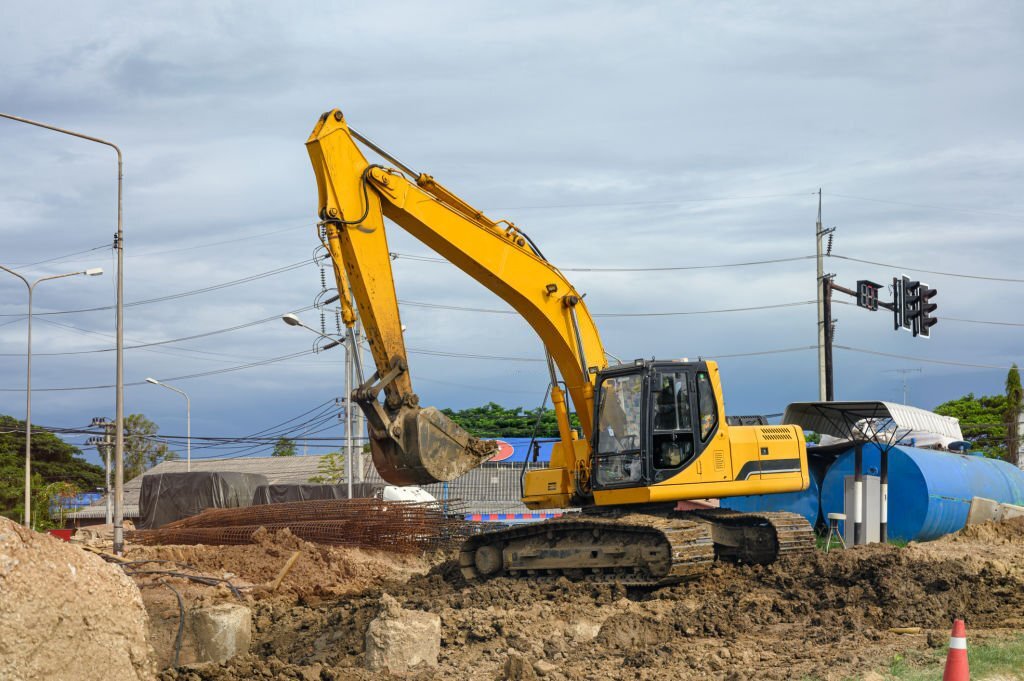Introduction
Dam construction and rehabilitation play pivotal roles in infrastructure development, serving as linchpins for water resource management, flood control, and environmental conservation. These projects are instrumental in sustaining ecosystems, providing water for agricultural and urban needs, and mitigating the risks associated with natural disasters. Over the past few years, the industry has experienced a transformative evolution with the incorporation of cutting-edge earthmoving equipment. This shift marks a departure from traditional methods, introducing a new era of efficiency, precision, and sustainability. State-of-the-art technologies, such as GPS-guided excavators and automated bulldozers, have become integral in reshaping the topography with unprecedented accuracy. This not only expedites the construction process but also enhances the overall quality of dam infrastructure. The deployment of advanced machinery has not only revolutionized the industry’s operational landscape but has also ushered in a paradigm shift towards greener and more sustainable practices, aligning with the global commitment to environmentally conscious infrastructure development.

The Evolution of Earthmoving Equipment
In the historical context of dam construction, labor-intensive methodologies and rudimentary machinery were the bedrock of the industry. Workers engaged in strenuous manual efforts, executing tasks like excavation and shaping with basic equipment, leading to prolonged project timelines and suboptimal precision. The dynamics of dam construction underwent a monumental shift with the integration of advanced earthmoving equipment. This technological evolution has redefined the industry, bringing about a new era characterized by heightened efficiency, precision, and safety. The introduction of state-of-the-art machinery, such as GPS-guided excavators and automated bulldozers, has been instrumental in streamlining processes. These innovations allow for pinpoint accuracy in excavation and grading, addressing the shortcomings of traditional methods. Consequently, project timelines have significantly shortened, and safety standards have been elevated with features like collision avoidance systems and remote operation capabilities. The contemporary fusion of cutting-edge technology and construction practices marks a pivotal phase in dam construction, where the marriage of innovation and practical expertise ensures projects are executed with unprecedented efficiency, precision, and safety.
Cutting-Edge Technologies
1. GPS-guided Excavators:

The integration of GPS technology into modern excavators has revolutionized the field of dam construction. These advanced excavators offer unparalleled accuracy in the intricate tasks of digging and shaping the terrain. With GPS guidance, these machines precisely navigate the topography, ensuring optimal foundation preparation. This technological innovation significantly mitigates the risk of errors that were prevalent in traditional methods, where manual excavation often led to imprecise foundation layouts. The result is a remarkable enhancement in overall project quality, as the precision afforded by GPS-equipped excavators ensures that the foundation aligns perfectly with engineering specifications. This not only streamlines the construction process but also contributes to the longevity and structural integrity of the dam, marking a substantial leap forward in construction technology and its positive impact on project outcomes.
2. Automated Bulldozers:

In the realm of dam construction, contemporary bulldozers have undergone a transformative evolution with the incorporation of advanced automation features. These technological upgrades empower bulldozers to execute grading and leveling tasks with unprecedented efficiency. The automation systems not only enhance operational speed but also optimize the utilization of resources, contributing to cost-effectiveness. One notable advantage is the ability to minimize environmental impact by precisely controlling excavation depths and avoiding over-excavation. This level of precision ensures that only the necessary amount of material is disturbed, preserving the surrounding ecosystem and minimizing disruption to natural habitats. The integration of automation in bulldozers signifies a conscientious approach to construction, aligning with global initiatives for sustainable and environmentally friendly practices. As a result, these modern machines play a pivotal role in balancing construction requirements with ecological responsibility, making dam projects not just efficient but also environmentally sensitive.
Efficiency Gains and Time Savings
1. Faster Excavation:

The introduction of high-powered excavators with enhanced digging capabilities has significantly elevated the efficiency of dam construction projects. These advanced machines boast superior power and agility, enabling faster and more effective excavation processes. The accelerated pace of excavation not only expedites the overall construction timeline but also plays a pivotal role in cost reduction. By completing tasks at an increased speed, high-powered excavators contribute to substantial savings in labor costs. The efficiency gains achieved through these technologically advanced excavators are twofold – not only do they reduce the time required for excavation, but they also decrease the reliance on manual labor, leading to more economical project execution. As a result, the incorporation of such cutting-edge equipment stands as a testament to the industry’s commitment to optimizing construction processes, promoting timely project delivery, and ensuring economic viability in dam construction endeavors.
2. Streamlined Transportation:
The design of earthmoving equipment includes a crucial feature – easy mobility between diverse project sites. This characteristic empowers construction teams with the flexibility to swiftly transport equipment from one location to another, facilitating quick deployment at various dam construction sites. The ability to move efficiently between projects enhances the overall productivity of the construction process. Earthmoving machinery’s mobility is particularly advantageous when working on multiple dams simultaneously, as it eliminates the need for extended setup times between different locations. This not only optimizes resource utilization but also ensures that construction efforts are maximized across various sites concurrently. The easy transportation of earthmoving equipment stands as a testament to the adaptability and efficiency of modern construction practices, enabling construction teams to meet the demands of concurrent projects seamlessly while maintaining a high level of operational agility.
Environmental Sustainability

1. Reduced Environmental Impact:
The integration of advanced equipment in dam construction reflects a commitment to minimizing environmental impact. Notably, the incorporation of GPS technology plays a pivotal role in achieving precision and efficiency while mitigating disruption to ecosystems. Modern earthmoving equipment, equipped with GPS guidance systems, ensures pinpoint accuracy in excavation activities, thereby reducing the overall disturbance to surrounding environments. This precision allows construction teams to strategically plan and execute excavation tasks, minimizing the footprint of construction sites and preserving natural habitats. The use of GPS technology not only enhances the environmental sustainability of dam construction but also aligns with broader global initiatives promoting eco-friendly practices in infrastructure development. By adopting these advanced technologies, the construction industry is poised to strike a harmonious balance between meeting developmental needs and preserving the delicate ecosystems, setting a standard for responsible construction practices that prioritize environmental stewardship.
2. Fuel Efficiency:
In the era of contemporary dam construction, a notable stride towards sustainability is observed through the integration of energy-efficient features in modern earthmoving machines. Many of these machines are now equipped with advanced technologies that significantly reduce fuel consumption and emissions. This dual benefit not only contributes to lowering operational costs for construction projects but also aligns seamlessly with the worldwide commitment to sustainable construction practices.
The incorporation of energy-efficient features represents a proactive response to the pressing need for eco-friendly solutions in the construction industry. By reducing fuel consumption, these machines not only decrease the financial burden on project budgets but also curtail the environmental footprint associated with construction activities. This aligns with global efforts to minimize the industry’s impact on climate change and fosters a paradigm shift towards greener construction practices. As the construction sector embraces these advancements, it takes a significant step forward in balancing infrastructure development with environmental stewardship, setting a precedent for a more sustainable and responsible approach to future construction endeavors.
Safety Enhancements

1. Remote Operation:
The evolution of earthmoving equipment in dam construction extends beyond efficiency gains to prioritize worker safety, especially in challenging or hazardous terrains. A notable technological advancement is the ability of some equipment to be operated remotely, mitigating risks associated with difficult environments. This remote operation capability allows operators to control machinery from a safe distance, reducing direct exposure to potential dangers such as unstable terrain or adverse weather conditions.
The significance of remote operations in enhancing worker safety cannot be overstated. By eliminating the need for on-site personnel in hazardous areas, the construction industry not only minimizes the risk of accidents and injuries but also creates a safer working environment overall. This transformative approach not only aligns with contemporary safety standards but also underscores the industry’s commitment to leveraging technology for the well-being of its workforce. As earthmoving equipment continues to evolve, the integration of remote operation features becomes a cornerstone in fostering a safer and more secure construction environment, paving the way for a future where technological innovations prioritize worker safety.
2. Collision Avoidance Systems:

The integration of cutting-edge safety systems in dam construction, such as sensors and cameras, represents a transformative leap in ensuring the well-being of both workers and machinery. These advanced technologies play a pivotal role in preventing collisions and accidents on construction sites. Equipped with sensors that detect obstacles and cameras providing comprehensive visibility, earthmoving equipment becomes more adept at navigating complex terrains and avoiding potential hazards. This not only safeguards the construction workforce by minimizing the risk of accidents but also protects the equipment itself from damage, ensuring operational longevity and efficiency.
The implementation of such safety measures reflects the industry’s commitment to prioritizing the health and safety of its workers while concurrently safeguarding the substantial investments made in state-of-the-art machinery. As the construction sector embraces these cutting-edge safety features, it sets a new standard for responsible and risk-mitigated practices, reshaping the landscape of dam construction with a focus on worker well-being and equipment preservation.
Conclusion
The integration of advanced earthmoving equipment has undoubtedly transformed the landscape of dam construction and rehabilitation. The benefits, ranging from increased efficiency and time savings to enhanced environmental sustainability and safety, underscore the pivotal role of technology in shaping the future of infrastructure development. As the industry continues to embrace innovation, we can expect even more groundbreaking advancements that will redefine the way we build and upgrade dams for generations to come.

